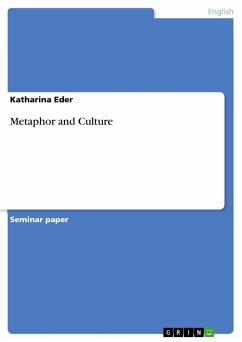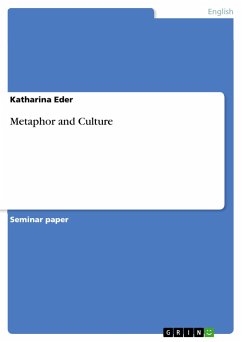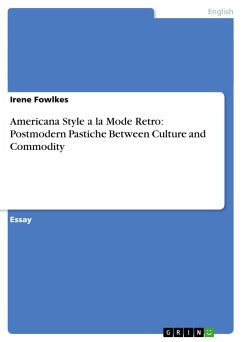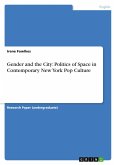Seminar paper from the year 2009 in the subject English Language and Literature Studies - Linguistics, grade: 1, University of Vienna, language: English, abstract: The first question that arises is in the context of "Metaphor and Culture" is what metaphor actually has to do with culture. This question can be answered in the way that metaphor and culture are related in many ways. Metaphor can be viewed as the ornamental use of language, and a lot about metaphor and culture arises from whatwe have heard or learned in school about it, such as for instance creative writers or poets who use metaphors. Since literature is a significant part of our culture, metaphor can be regarded as intimately linked to our socio-cultural field. So a possible way of relation between metaphor and culture would be literature, anexemplary manifestation of culture. However, there are in fact much more fundamental relations between metaphor and culture, which become clear when we look at some currrent thinking in anthropology, which leads us to the fact that we can view culture as a set of shared understandings that characterize smaller or larger groups of people (cf. Shore 1996, Strauss & Quinn 1997). It has to be noted that this is obviously not an exhaustive view or definition of culture, considering the fact that it leaves out real artifacts, real objects, practices, institutions, actions and so on, which people participate in and use in various cultures. However, it integrates a large part of it, namely the shared understanding that human beings have in connection with all of these "things".
Hinweis: Dieser Artikel kann nur an eine deutsche Lieferadresse ausgeliefert werden.
Hinweis: Dieser Artikel kann nur an eine deutsche Lieferadresse ausgeliefert werden.








